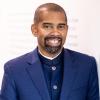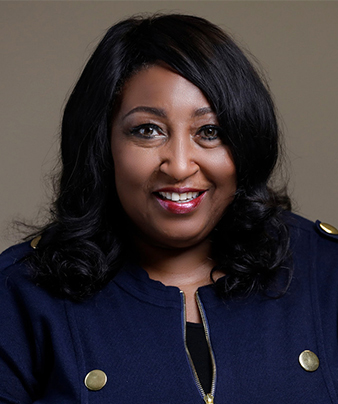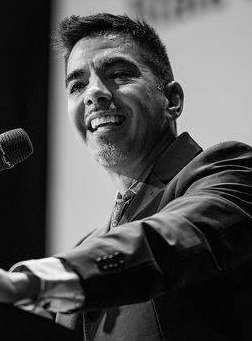Meet the Moment: Demystifying Bold
I’ll be the first to acknowledge that I’ve arrived as NCG’s CEO on the shoulders of many others that came before me. Two of the strongest shoulders belong to my first professional mentor and a heavyweight in philanthropic circles, Joe Brooks. During my seventeen years as a work partner and friend at The San Francisco Foundation and then PolicyLink, I learned more from him than I could ever adequately describe. He had a habit of saying things that were increasingly profound the more you thought about them. One of those sayings was, “how much do you need to know to act?”, often dropped in a setting surrounded by other foundation colleagues where he was about to propose bold action to engage some of the Bay Area’s most vexing social challenges.
I’ve been thinking about that a lot lately, as we are at a pivotal moment in this global pandemic experience. We can no longer see the shore we departed before the upheaval began, nor are we certain to what shore we are bound for as society evolves to a new set of conditions. We are truly at sea, desperate for direction, anxious to know the nature of our destination, and searching for tools to guide our journey.
We in philanthropy hold extraordinary privilege in these troubled times. We have the knowledge, access, experience, and resources to make meaningful differences in the lives of vulnerable populations at a time when it is more sorely needed than ever. But knowing what move to make, what investment to redouble, what relationship to trust feels more laden with pressure than ever. Can we afford to make the wrong choice?
This is when I begin to understand fully what Joe meant. It was not about rushing to action without understanding context. It was about balancing the positionality and leverage we hold as institutions with the responsibility we have to make sure communities have the resources they need to improve their life outcomes when they need them, and not letting perfection stand in the way of meaningful progress. It was about being in a continuous learning posture even as you commit to work in real time with people in neighborhoods under duress. It was about being bold, because the times demand it.
When I joined NCG, the refrain I heard from literal scores of foundation, nonprofit, and government leaders was ‘be bold’. We are working on what that means for us as a team as Northern California’s resource for innovative philanthropy. I do know that part of that comes with our centering racial equity, our own compass to navigate the sea as we seek that other shore. I am beginning to understand another part of our charge is to demystify boldness for the hundreds of philanthropies that serve this region. We all have the capacity to take powerful actions that can help our communities weather the multiple crises they currently face – the question is do we all have the will? We have seen several foundations model bold behavior during the pandemic, but they represent the leading edge of a curve that needs to bend strongly toward more dramatic action.
For those who seek to take more decisive action, and are working to figure out exactly how to unleash that full potential within your institution, I offer you seven insights drawn directly from your colleagues that have helped them to take those important steps:
Center racial equity in your practice. It is particularly important to recognize structural barriers that inhibit the ability of people of color from participating fully in our economy and society when those systems are under assault.
Acknowledge insufficiency of the status quo. The first step in rebuilding communities devastated by pandemic, economic, and social disruption is recognizing that the systems we had before were not serving all populations adequately, and that a sharper vision for our society is essential.
Commit to an equitable recovery. Making this the driver of our investments, partnerships, policy initiatives, and community building greatly enhances the potential to re-engage populations long disconnected from mainstream society.
Build meaningful relationships with community. The reason you hear people say repeatedly that those closest to the problem have sharpest insight on the necessary solutions is because it is true. If you have those connections, now is the time to engage them. If not… we’ll do another entire piece on that process.
Utilize every resource that can push your practice. Foundations typically have access to a dizzying array of academic, technical, political, financial, and community resources. It is in fact a bold act to put each of these into play in service, not to return to where we were, but to build a more equitable reality for our most impacted communities. These are not tepid times – it will mean trying things you have not done before.
Balance patience and alacrity. This one is tricky. Even as we step up our game, we have to acknowledge this is long haul work. That said, we cannot rest behind that reality but have to move with force to push the boundaries of our previous work as if lives depend on it today. Because they do.
Learn from colleagues. We all do better when we journey together. Others are facing similar dilemmas about how best to respond to this moment. Find your buddy, preferably someone who can show you an aspect of the work your institution has yet to master.
Spoiler Alert
As it turns out, I’ve found a buddy who is doing just that for me. Many of you know Marcus Walton, President and CEO of Grantmakers for Effective Organizations. If you do, it should come as no surprise that I am learning something valuable each time we speak. In fact, as I think about demystifying boldness, it raises a question for me about which I would love to garner his reflections.
Marcus, how best does philanthropy choose courage in the face of the unprecedented complexity the moment offers?




